60 minute hatha yoga sequence pdf
Hatha Yoga is a traditional practice emphasizing physical postures and breathing techniques. A 60-minute sequence offers a balanced approach, ideal for beginners, with a structured flow from grounding to building strength and ending in relaxation, promoting mindfulness and overall well-being.
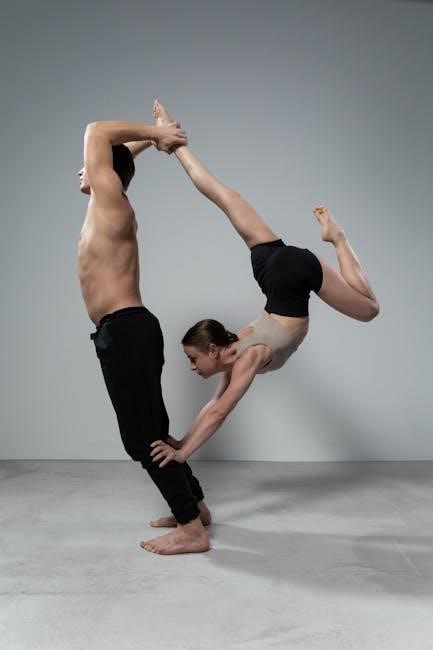
Structure of a 60-Minute Hatha Yoga Sequence
A 60-minute Hatha Yoga sequence is structured into three phases: grounding and warm-up with gentle poses, building heat with standing postures, and relaxation with meditative techniques, ensuring a balanced and rejuvenating experience.
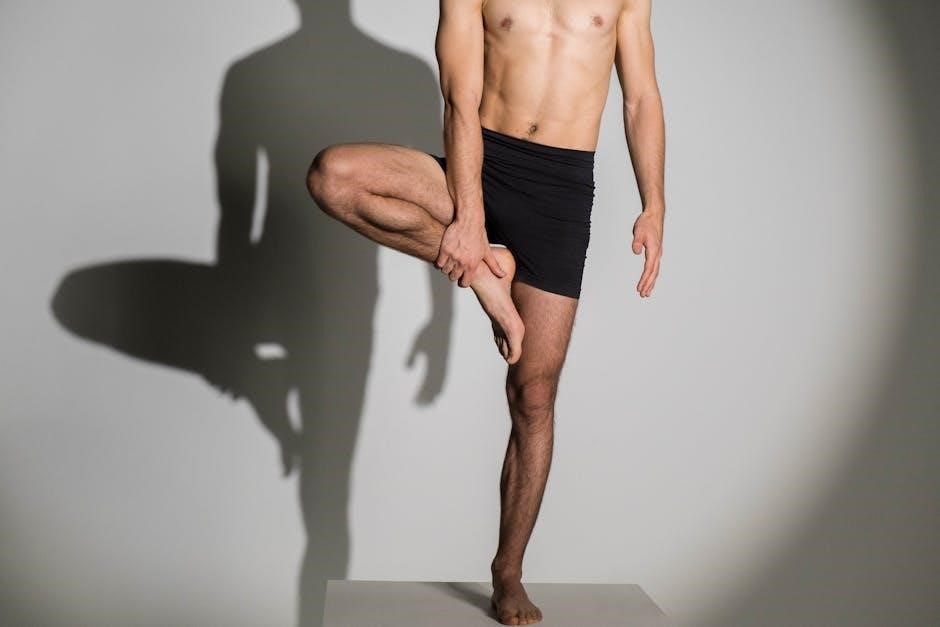
Beginning Phase: Grounding and Warm-Up
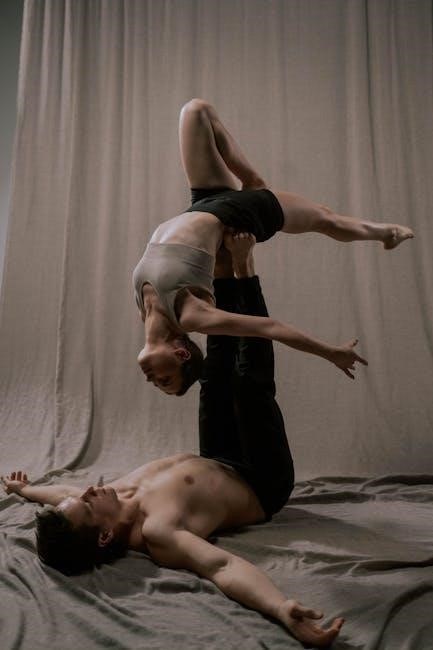
The beginning phase of a 60-minute Hatha Yoga sequence focuses on grounding and preparing the body for practice. It typically starts with centering techniques, such as sitting comfortably and closing the eyes to connect with the breath. Gentle movements like neck rolls, shoulder stretches, and wrist rotations help warm up the joints and release tension. Cat-Cow stretches are often included to awaken the spine and improve flexibility. This phase also introduces foundational postures, such as Mountain Pose (Tadasana), to establish proper alignment and awareness. The goal is to create a calm and focused state, setting the tone for the entire practice. Breathing techniques, like deep belly breathing, are often emphasized to anchor the mind and prepare the body for deeper work. This initial phase lasts about 10-15 minutes, providing a smooth transition into the more dynamic aspects of the sequence. By starting slowly, practitioners can build a strong foundation for the poses and breathing practices that follow.
Middle Phase: Building Heat and Strength
The middle phase of a 60-minute Hatha Yoga sequence focuses on building heat and strength through dynamic postures and flows; This section typically lasts 20-25 minutes, with poses designed to engage the entire body. Sun Salutations (Surya Namaskar) are often included to warm up the muscles, increase heart rate, and prepare the body for deeper work. Standing poses, such as Warrior I (Virabhadrasana I) and Triangle Pose (Trikonasana), are introduced to build strength, stability, and balance. These postures are held for several breaths to deepen the stretch and enhance endurance. Seated postures, like Seated Forward Bend (Paschimottanasana) and Boat Pose (Paripurna Navasana), are also incorporated to strengthen the core and improve flexibility. Balancing poses, such as Tree Pose (Vrksasana) and Eagle Pose (Garudasana), are added to challenge coordination and focus. This phase emphasizes proper alignment, controlled breathing, and mindful transitions between poses. The intensity gradually increases, allowing practitioners to tap into their inner strength and energy. By the end of this phase, the body is fully engaged, and the mind is focused, preparing for the final relaxation and meditation phase.
End Phase: Relaxation and Meditation
The final phase of a 60-minute Hatha Yoga sequence is dedicated to relaxation and meditation, allowing the body and mind to unwind. This phase typically lasts 10-15 minutes and transitions from active postures to calming practices. Legs-Up-The-Wall Pose (Viparita Karani) is often used to promote circulation and relaxation, followed by gentle stretches like Seated Forward Bend (Paschimottanasana) to release tension in the spine and hamstrings. The sequence concludes with Savasana (Corpse Pose), where the body is completely still, and the mind focuses on deep, conscious breathing. Guided meditation or simply silence is incorporated to encourage introspection and inner peace. This phase helps lower heart rate, reduce stress, and restore energy. Props like bolsters or blankets are often used to support the body in comfortable positions, enhancing relaxation. The goal is to create a meditative state, allowing practitioners to reconnect with their inner selves and carry the calmness of the practice into daily life. This final phase is essential for balancing the physical and mental benefits of the sequence, leaving participants feeling refreshed and centered.
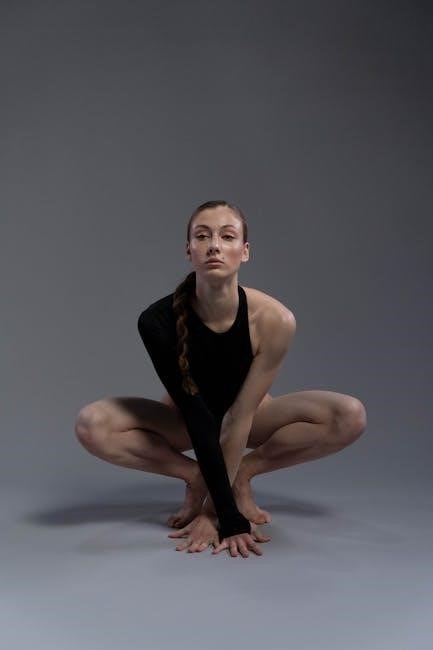
Foundational Hatha Yoga Poses
Hatha Yoga is built on a set of foundational poses that form the cornerstone of its practice. These poses are designed to align the body, balance energy, and prepare the practitioner for deeper meditation. One of the most essential poses is Mountain Pose (Tadasana), which establishes proper posture and grounding. From there, poses like Downward-Facing Dog (Adho Mukha Svanasana) and Cobra Pose (Bhujangasana) are often incorporated to strengthen the core and open the chest. Cat-Cow Pose (Marjaryasana-Bitilasana) is a gentle sequence that warms up the spine and promotes flexibility. Another key pose is Child’s Pose (Balasana), which provides relaxation and restoration. These postures are typically held for several breaths to encourage mindfulness and awareness. They also serve as a gateway to more complex poses, making them accessible for beginners while still benefiting advanced practitioners. By mastering these foundational poses, one can build a strong base for a balanced and transformative Hatha Yoga practice. These poses are often included in a 60-minute sequence to ensure a comprehensive and holistic experience. Regular practice of these asanas can lead to improved physical alignment, increased strength, and enhanced mental clarity. The focus on proper alignment and breath awareness in these poses makes them a cornerstone of Hatha Yoga.
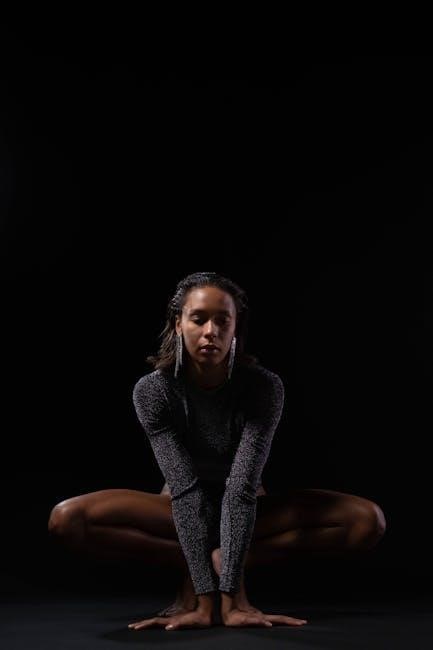
Importance of Breathing Techniques in Hatha Yoga
Breathing techniques, known as Pranayama, are a cornerstone of Hatha Yoga, serving as the bridge between physical postures and meditation. These techniques are designed to balance the body’s energy, calm the mind, and prepare the practitioner for deeper states of consciousness. One of the most common practices is Ujjayi (Ocean Breath), which involves breathing through the nose with a soft hissing sound, promoting relaxation and focus. Another technique is Kapalabhati (Breath of Fire), an invigorating breath that detoxifies and energizes the body. These practices are often integrated into the 60-minute sequence to enhance the benefits of each pose. Proper breathing helps synchronize movement with the flow of energy, deepening the practice and reducing the risk of injury. It also cultivates mindfulness, allowing practitioners to stay present and fully engage with their bodies. By mastering these techniques, one can experience improved physical, mental, and emotional well-being. Breathing is not just an accessory to the practice but its very essence, transforming Hatha Yoga into a holistic experience that nurtures the entire being. Regular practice of Pranayama can lead to enhanced vitality, reduced stress, and a greater sense of inner peace.
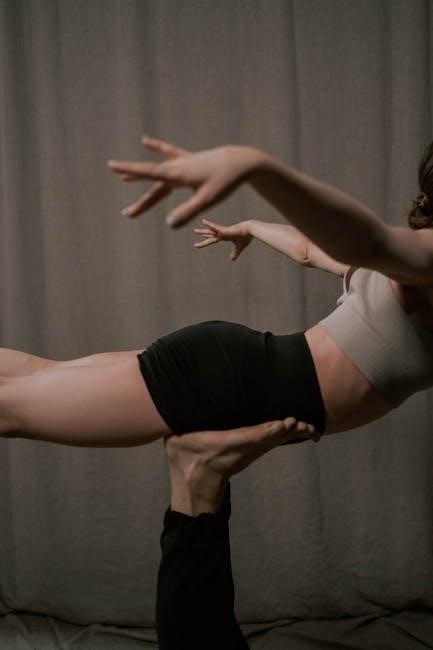
Use of Props in the Hatha Yoga Sequence
Props are invaluable tools in a Hatha Yoga practice, especially within a 60-minute sequence, as they enhance accessibility and comfort. Commonly used props include bolsters, blocks, blankets, and straps. Bolsters are particularly useful for supporting the body in restorative poses, allowing deep relaxation and opening in the chest and shoulders. Blocks help practitioners reach the ground in forward bends and maintain proper alignment in standing poses, making postures more attainable for those with flexibility limitations. Blankets provide grip and cushioning, reducing discomfort in seated or kneeling positions. Straps assist in deepening stretches and maintaining balance, especially in challenging postures like Baddha Konasana (Bound Angle Pose). The use of props ensures that each pose is performed safely and effectively, regardless of the practitioner’s level of flexibility or strength. This support allows for a more meditative experience, as the focus shifts from struggling to maintaining awareness of the breath and body. Incorporating props into the sequence fosters a nurturing environment, encouraging practitioners to honor their bodies and deepen their practice without strain. They are not merely aids but integral elements that enhance the overall benefits of Hatha Yoga. Regular use of props can lead to greater confidence and a more profound connection to the practice.
A well-structured 60-minute Hatha Yoga sequence offers numerous benefits for the body, mind, and spirit. It promotes physical health by improving flexibility, strength, and balance while enhancing mental clarity and reducing stress. The combination of postures, breathing techniques, and relaxation fosters a sense of calm and inner peace, making it an ideal practice for overall well-being. Regular practice can lead to better posture, improved circulation, and enhanced respiratory function. Additionally, the mindfulness cultivated during the sequence encourages a deeper connection to oneself, fostering self-awareness and emotional resilience. The balanced structure of the sequence ensures that practitioners of all levels can benefit, whether they are seeking physical challenge, mental relaxation, or spiritual growth. By incorporating this practice into daily life, individuals can experience profound improvements in both physical and mental health, leading to a more harmonious and balanced lifestyle. The 60-minute Hatha Yoga sequence is a holistic approach to wellness, offering something for everyone.